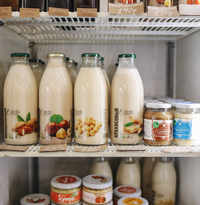Maximize Your Cash Deposit in Saving Accounts
You may find that your current savings and checking accounts have a cash deposit limit set to what you can deposit in. This might be helpful, especially if you are just starting out and are not sure exactly how much money you want to put into the bank. You may find, however, that you have a daily deposit limit for checking. If this is the case, then you are limited to what you have put into your account. However, there are ways to save money on both your checking and savings accounts. Here are a few tips to help you learn more about ways to save money:
– Calculate how much money you think you will need to deposit each month. Add up your expenses for food, gas and other things you use each week. Then multiply that number by seven days. This tells you how much money you would need for a month at a traditional savings account. This might be an estimate, since many people do not plan to keep a regular savings account, but it will give you a guideline as to how much money you should deposit into a cash deposit limit for a savings account.
– Consider your level of income when planning your budget. If you earn more than the amount you plan to put into a savings account each month, then you should save more money in your budget. Your savings account needs to be able to handle at least three thousand dollars a month in order to be most effective.
– Know your tax rate. The tax code is constantly changing, so you should be aware of any changes that could affect how much money you will be putting into your savings account. Also know the inflation rate. This will let you determine what the value of your cash deposit limit will be each year, based on today’s prices.
Be sure to keep track of your spending. Know the total amount of money going out and coming in each month. You should also look for any charges on the ATM card or checks that you use to pay for purchases. Check to see if your checks are getting caught up in the processing times. Keep all documents for your checking account in order, so that if anything happens where you close the account, you can retrieve the records. You may need to start over at the cash deposit limit.
Be careful with your debit cards. If you have a debit card, you should avoid using them for personal expenses. These things can end up being charged back to you, even when you are paying off the balance on the card. This could mean a significant cash deposit limit in your saving account that you will no longer be able to access. There may be limits on the size of cash advances you are allowed to take out each month, so be sure to read this policy before you do anything.
Know how much credit you have available to you. If you currently have credit cards, you may still be able to open a new checking and savings account. Make sure that you know how much money is in your current accounts, as well as the total available on your credit cards. If you don’t have enough available credit on hand, you will be tempted to use your credit cards, and that is not a good idea when you are trying to get a larger cash deposit in your account.
Do not mix personal and business accounts when you are trying to boost your cash deposit limit in your saving account. If you have both a checking and savings account, you should separate the finances. This will prevent any problems when you need to make a transaction between the two. Your personal finances should be kept separate from your business finances.



